Characteristics of RF-Sputtered Thin Films of Calcium Phosphate on Titanium Dental Implants
Abstract
:1. Introduction
2. Materials and Experimental Methods
3. Results and Discussion
3.1. Characterization of Sputtered CaP Coatings on Different Substrates
3.1.1. Substrate Roughness
3.1.2. Thickness Analysis of HA-Sputtered Films
3.1.3. Ca/P Ratio of HA-Sputtered Films
3.1.4. Phase and Chemical Compositions of CaP Films
3.1.5. Surface Morphology Analysis of CaP Films
3.2. Dissolution Assay
4. Conclusion
Acknowledgments
Author Contributions
Conflicts of Interest
References
- Ferguson, S.J.; Broggini, N.; Wieland, M.; Wild, M.D.; Rupp, F.; Geis-Gerstorfer, J.; Cochran, D.L.; Buser, D. Biomechanical evaluation of the interfacial strength of a chemically modified sandblasted and acid-etched titanium surface. J. Biomed. Mater. Res. Part A 2006, 24, 291–297. [Google Scholar] [CrossRef] [PubMed]
- Cizek, J.; Khor, K.A.; Prochazka, Z. Influence of spraying conditions on thermal and velocity properties of plasma sprayed hydroxyapatite. Mater. Sci. Eng. C 2007, 27, 340–344. [Google Scholar] [CrossRef]
- Sun, L.; Berndt, C.C.; Grey, C.P. Phase, structural and microstructural investigations of plasma sprayed hydroxyapatite coatings. Mater. Sci. Eng. A 2003, 360, 70–84. [Google Scholar] [CrossRef]
- Aoki, H. Marvelous Biomaterial Apatite; Ishiyaku Publishers Inc.: Tokyo, Japan, 1999. [Google Scholar]
- Ravaglioli, A.; Krajewski, A. Bioceramics: Materials, Properties, Applications; Chapman & Hall Press: London, UK, 1992; pp. 44–45. [Google Scholar]
- Yang, Y. Influence of residual stress on bonding strength of plasma-sprayed hydroxyapatite coatings on Ti6Al4V substrate. Ph.D. Thesis, National Cheng Kung University, Tainan, Taiwan, 27 June 2003. [Google Scholar]
- Mercioniu, I.; Ciuca, S.; Pasuk, I.; Slav, A.; Morosnu, C.; Bercu, M. Thickness dependence of crystallization process for hydroxyapatite thin films. J. Optoelectron. Adv. Mater. 2007, 9, 2535–2538. [Google Scholar]
- Wolke, J.G.C.; Dijk, K.V.; Schaeken, H.G.; Groot, K.D.; Jansen, J.A. Study of the surface characteristics of magnetron-sputter calcium phosphate coatings. J. Biomed. Mater. Res. 1994, 28, 1477–1484. [Google Scholar] [CrossRef] [PubMed]
- Dijk, K.V.; Schaeken, H.G.; Wolke, J.G.C.; Maree, C.H.M.F.; Habraken, H.P.M.; Verhoven, J.; Jansen, J.A. Influence of discharge power level on the properties of hydroxyapatite films deposited on Ti6Al4V with RF magnetron sputtering. J. Biomed. Mater. Res. 1995, 29, 269–276. [Google Scholar] [CrossRef] [PubMed]
- Dijk, K.V.; Schaeken, H.G.; Wolke, J.G.C.; Jansen, J.A. Influence of annealing temperature on RF-magnetron sputtered calcium phosphate coatings. Biomaterials 1996, 17, 405–410. [Google Scholar] [PubMed]
- De Groot, K.; Klein, C.P.A.T.; Wolke, J.G.C.; Blieck-Hoger-vorst, J.M.A.D. Chemistry of calcium phosphate bioceramics. In CRC Handbook of Bioactive Ceramics. II Calcium Phosphate and Hydroxylapatite Ceramics; Yamamuro, T., Hench, L.L., Wilson, J., Eds.; CRC Press Inc.: Boca Raton, FL, USA, 1990; pp. 3–16. [Google Scholar]
- Wan, T.; Aoki, H.; Hikawa, J.; Lee, J.H. RF-magnetron sputtering technique for producing hydroxyapatite coating film on various substrates. Bio-Med. Mater. Eng. 2007, 17, 291–297. [Google Scholar]
- Wolke, J.G.C.; Groot, K.D.; Jansen, J.A. In vivo dissolution behavior of various RF magnetron sputtered Ca-P coatings. J. Biomed. Mater. Res. 1998, 39, 524–530. [Google Scholar] [CrossRef]
- Wolke, J.G.C.; Waerden, V.D.; Schaeken, H.G.; Jansen, J.A. In vivo dissolution behavior of various RF magnetron-sputtered Ca-P coatings on roughened titanium implants. Biomaterials 2003, 24, 2623–2629. [Google Scholar] [CrossRef]
- Chen, J.; Wolke, J.G.C.; Groot, K.D. Microstructure and crystallinity in hydroxyapatite coatings. Biomaterials 1994, 15, 396–399. [Google Scholar] [CrossRef]
- Dijk, K.V.; Schaeken, H.G.; Wolke, J.G.C.; Jansen, J.A. Influence of annealing temperature on RF magnetron sputtered calcium phosphate coatings. Biomaterials 1996, 17, 405–410. [Google Scholar] [PubMed]
- Lai, H.-C.; Tsai, H.-H.; Hung, K.-Y.; Feng, H.-P. Fabrication of hydroxyapatite targets in RF-sputtering for surface modification of titanium dental implants. J. Intell. Mater. Syst. Struct. 2015, 26, 1050–1058. [Google Scholar] [CrossRef]
- Hung, K.-Y.; Lo, S.-C.; Shih, C.-S.; Yang, Y.-C.; Feng, H.-P.; Lin, Y.-C. Titanium surface modified by hydroxyapatite coating for dental implants. Surf. Coat. Technol. 2013, 231, 337–345. [Google Scholar] [CrossRef]
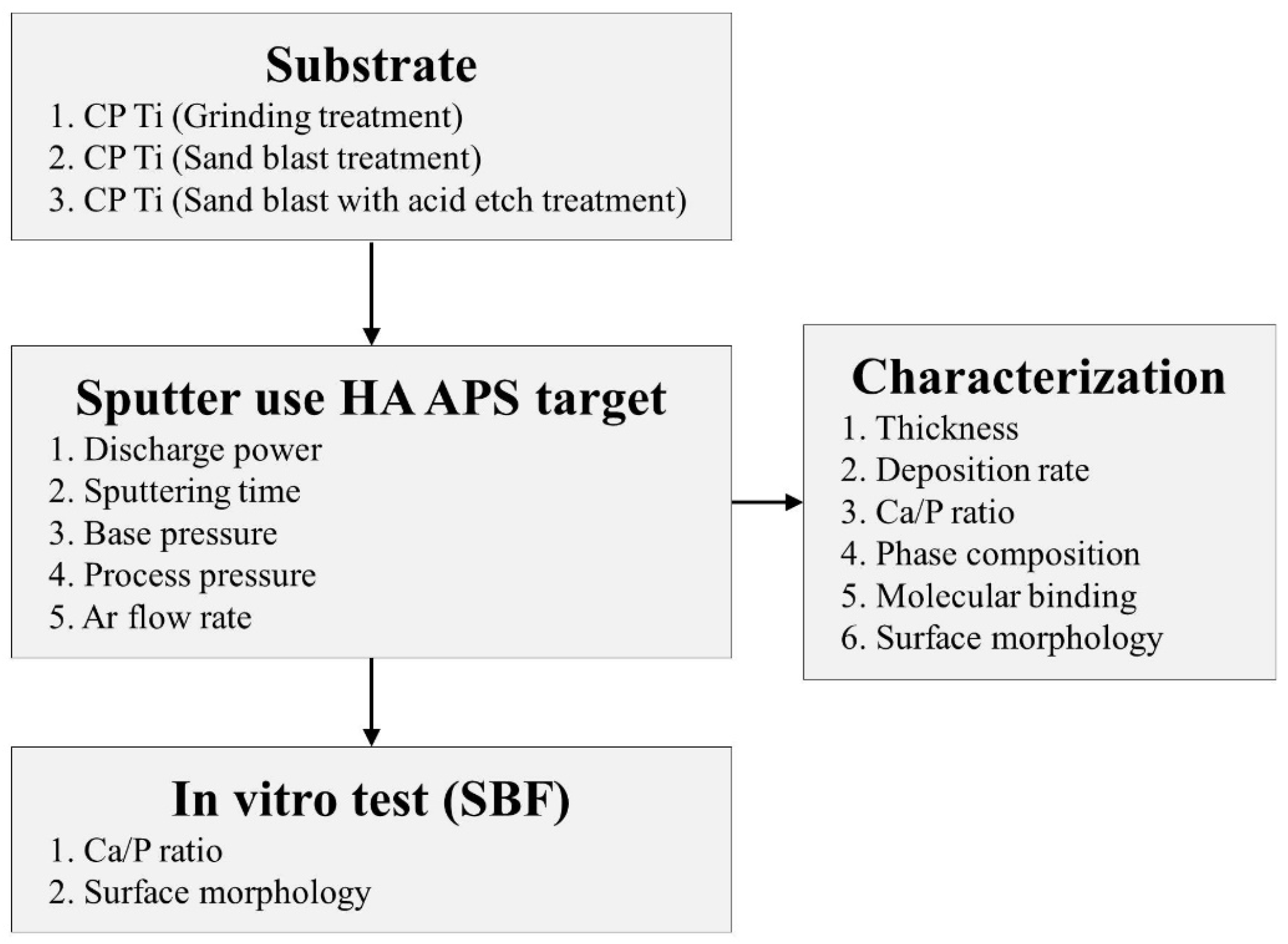

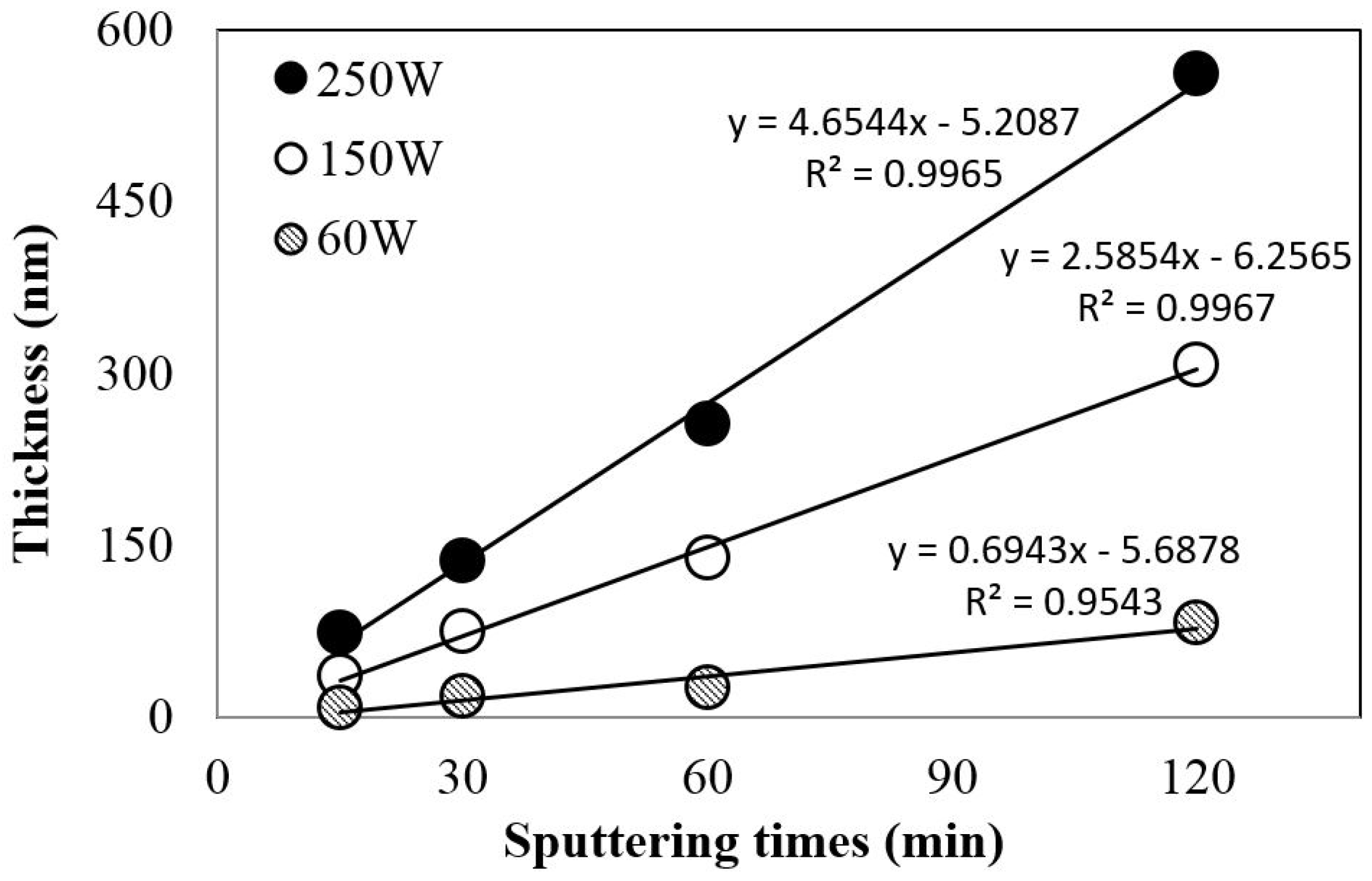
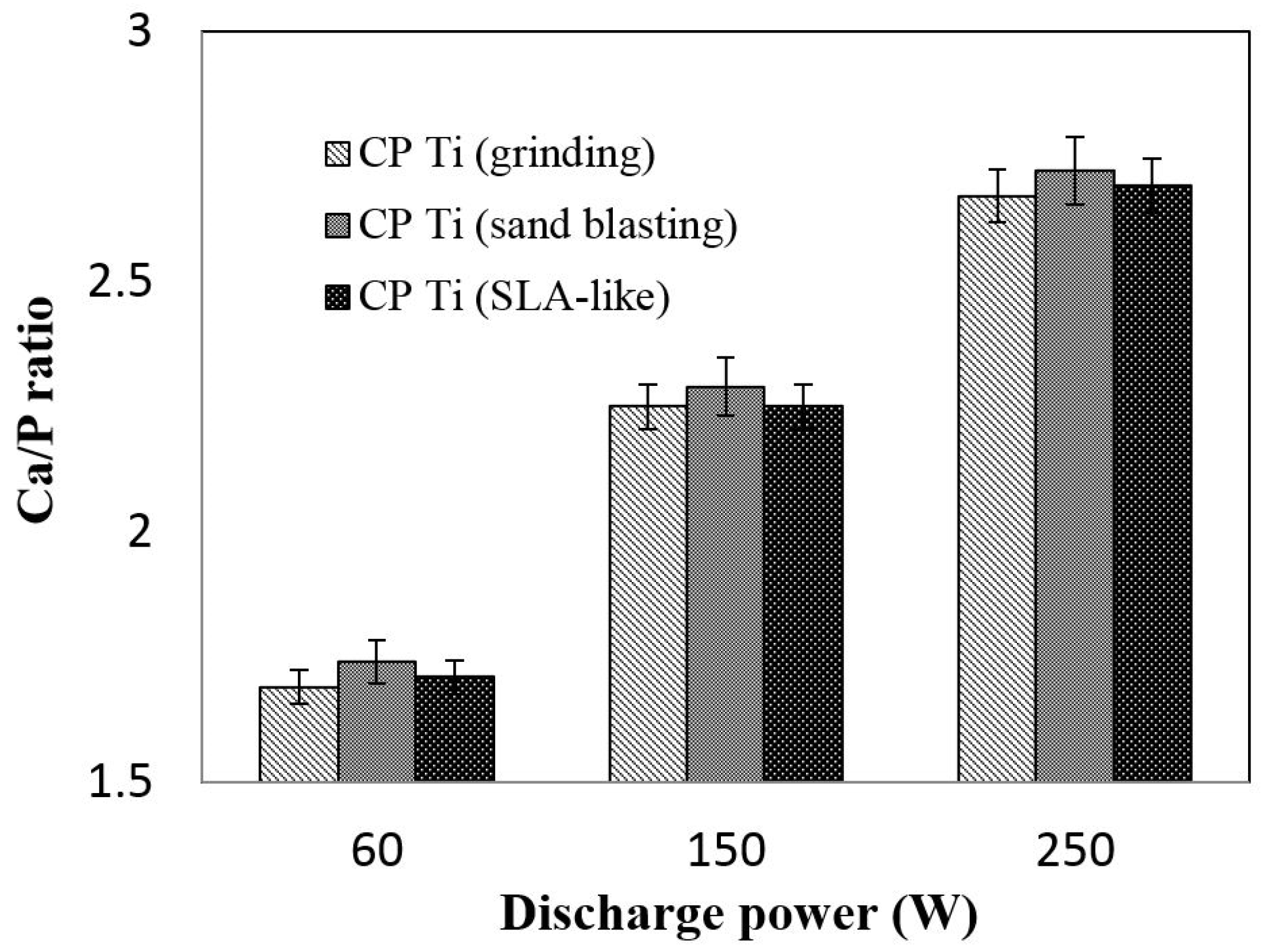
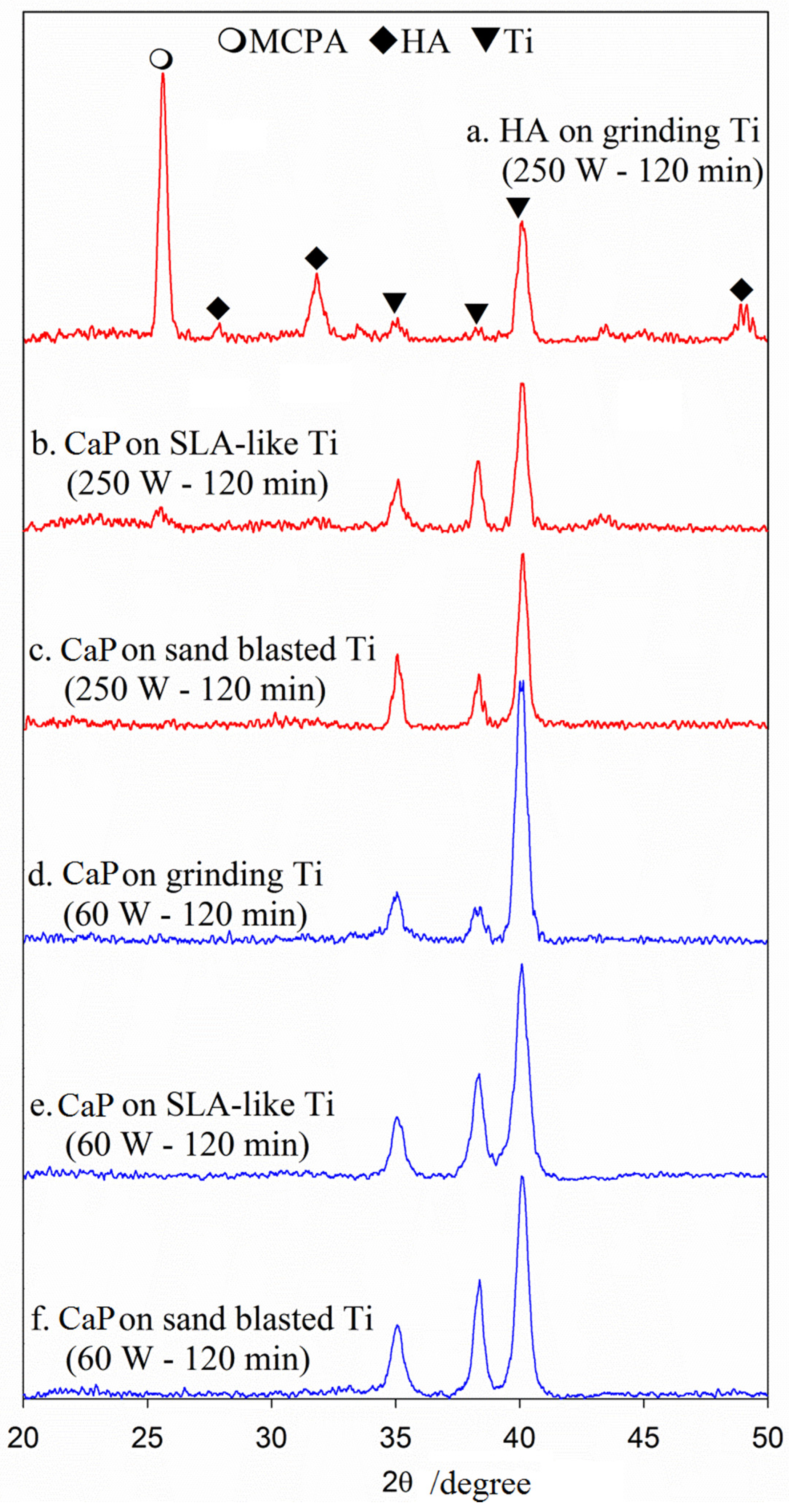
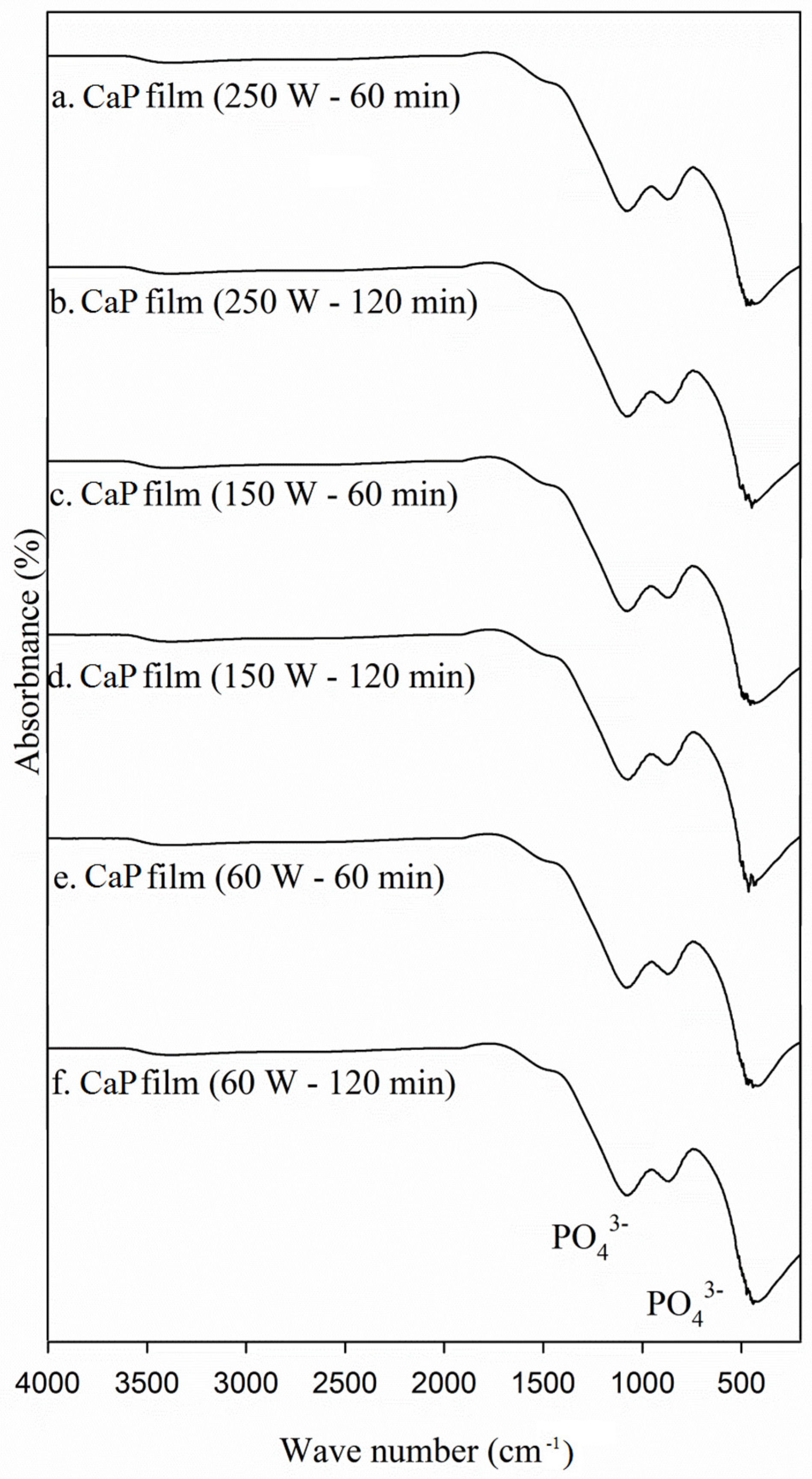
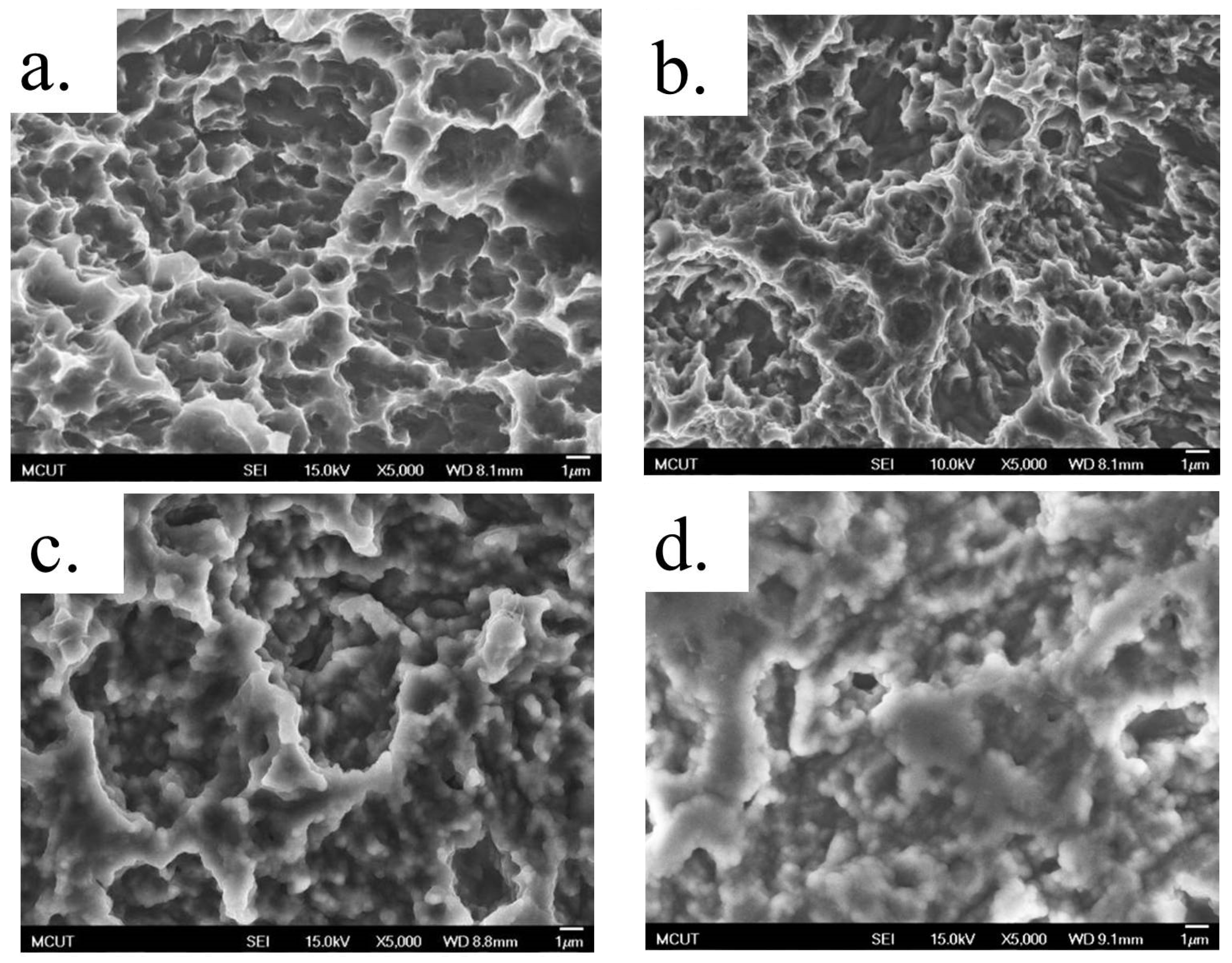
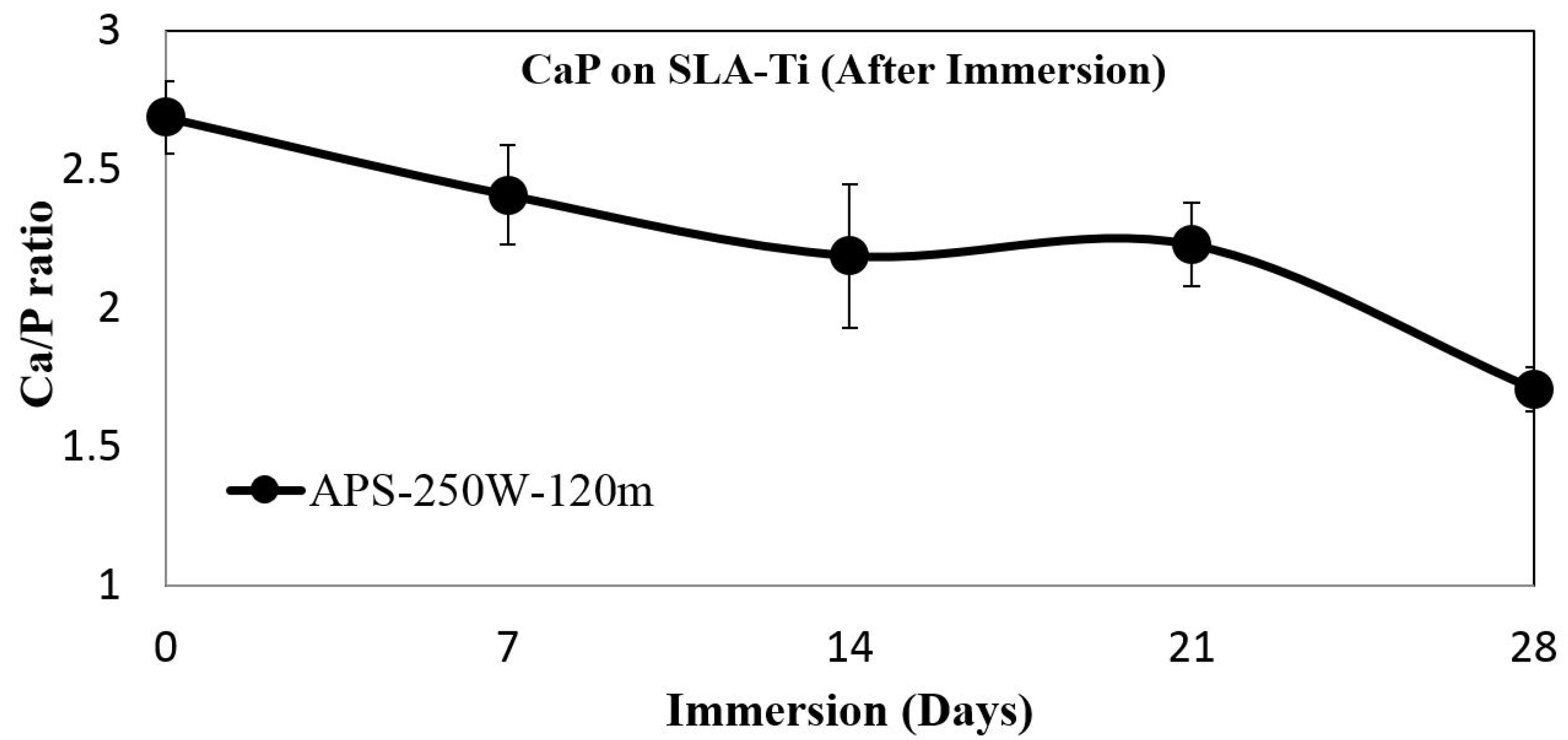
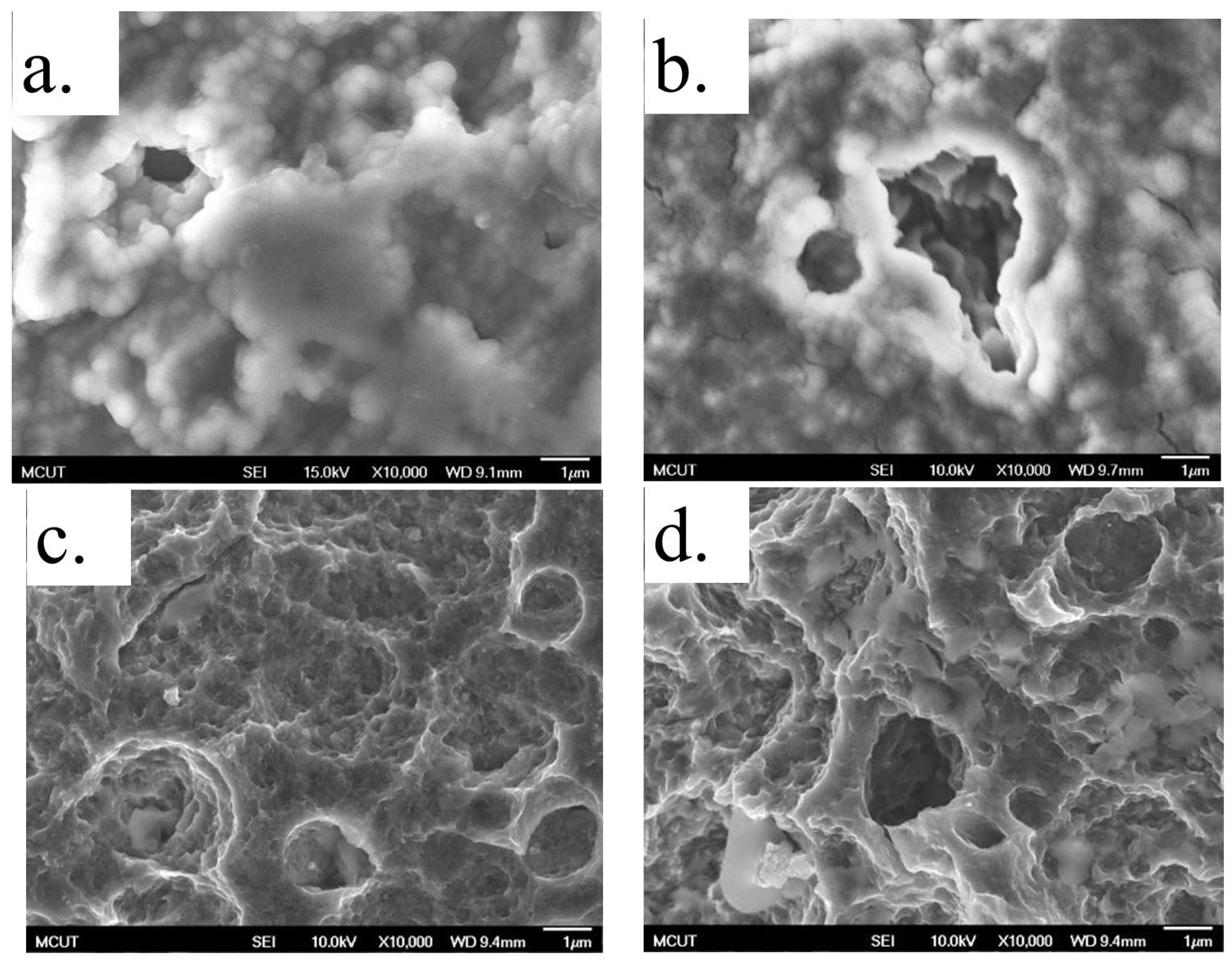
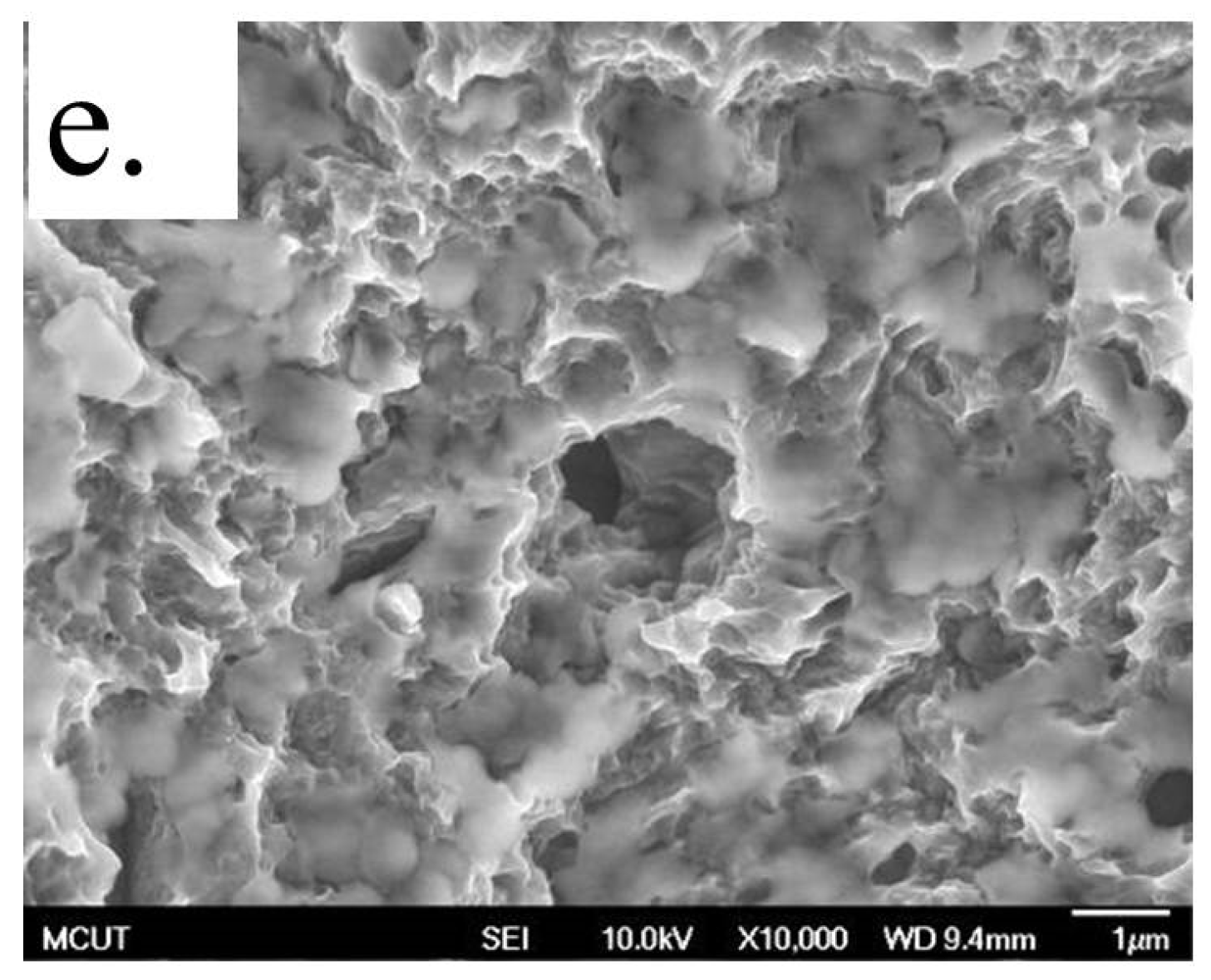
| Substrate Type | Parameters of the Substrate Process |
|---|---|
| Grinding | Grinding Ti substrate by SiC Waterproof abrasive paper, #800 for 30 min and #1200 for 15 min |
| Sand blasting | Al2O3 (Grit No. 100), pressure at 4 kg/cm2 for 60 s |
| SLA-like (Sand blasting with acid etching) | Sand blasting, then acid etching by heated HCl (80 °C) and heated H2SO4 (120 °C), each for 600 s |
| Parameters | Values |
|---|---|
| Sputtering time | 15–120 min |
| Base pressure | 0.9999177 × 10−3 Pa |
| Process pressure | 0.3999670 Pa |
| Argon flow rate | 20 sccm |
| Working distance | 70 mm |
| Power | 60–250 W |
© 2017 by the authors. Licensee MDPI, Basel, Switzerland. This article is an open access article distributed under the terms and conditions of the Creative Commons Attribution (CC BY) license (http://creativecommons.org/licenses/by/4.0/).
Share and Cite
Hung, K.-Y.; Lai, H.-C.; Feng, H.-P. Characteristics of RF-Sputtered Thin Films of Calcium Phosphate on Titanium Dental Implants. Coatings 2017, 7, 126. https://doi.org/10.3390/coatings7080126
Hung K-Y, Lai H-C, Feng H-P. Characteristics of RF-Sputtered Thin Films of Calcium Phosphate on Titanium Dental Implants. Coatings. 2017; 7(8):126. https://doi.org/10.3390/coatings7080126
Chicago/Turabian StyleHung, Kuo-Yung, Hong-Chen Lai, and Hui-Ping Feng. 2017. "Characteristics of RF-Sputtered Thin Films of Calcium Phosphate on Titanium Dental Implants" Coatings 7, no. 8: 126. https://doi.org/10.3390/coatings7080126




